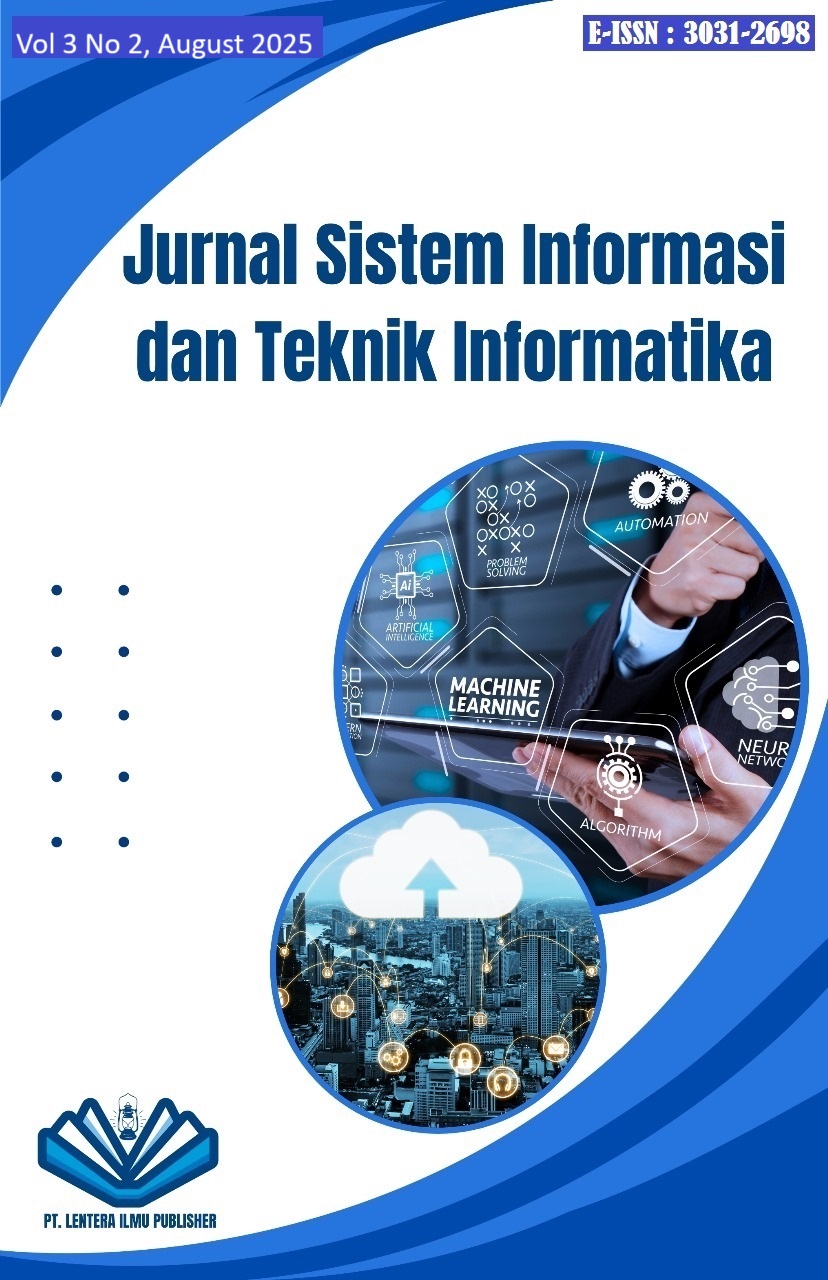Enhancing OSS E-Government Testing via CEG Method
DOI:
https://doi.org/10.70356/jafotik.v3i2.76Keywords:
OSS system, Cause-Effect Graphing, e-government testingAbstract
The rapid growth of e-government systems has created new opportunities to improve public service delivery, transparency, and efficiency. One prominent initiative in this area is Indonesia’s Online Single Submission (OSS) system, which centralizes licensing and regulatory processes into a digital platform. However, as usage expands, the OSS system faces recurring issues such as functional errors, incomplete test coverage, and inconsistent results that affect user trust and service reliability. To address these challenges, this study applies the Cause-Effect Graphing (CEG) method as a structured testing approach. By translating functional requirements into graphical models, the method enables systematic test case generation that covers both common and complex scenarios. The results show that CEG-based testing achieved higher test coverage (~90%), improved error detection, and reduced redundancy compared to traditional methods. These outcomes demonstrate the potential of CEG to enhance OSS quality and reliability while strengthening confidence in e-government services.
Downloads
References
A. Ali and A. Ali, “Extending the IBCDE Framework to Explore Barriers and Drivers in Indonesia’s Digital Economy,” Iscience, p. 111827, 2024, doi: https://doi.org/10.1016/j.jdec.2025.08.003.
J. Tridgell, “Open or closing doors? The influence of ‘digital sovereignty’ in the EU’s Cybersecurity Strategy on cybersecurity of open-source software,” Comput. Law Secur. Rev., vol. 56, no. November 2024, p. 106078, 2025, doi: https://doi.org/10.1016/j.clsr.2024.106078.
E. Krupalija et al., “ETF-RI-CEG-Advanced: A graphical desktop tool for black-box testing by using cause–effect graphs,” SoftwareX, vol. 25, no. October 2023, p. 101625, 2024, doi: https://doi.org/10.1016/j.softx.2023.101625.
B. Vogel-Heuser, V. Karaseva, J. Folmer, and I. Kirchen, “Operator Knowledge Inclusion in Data-Mining Approaches for Product Quality Assurance using Cause-Effect Graphs,” IFAC-PapersOnLine, vol. 50, no. 1, pp. 1358–1365, 2017, doi: https://doi.org/10.1016/j.ifacol.2017.08.233.
B. Bekiroglu, “a Cause-Effect Graph Software Testing Tool,” Eur. J. Comput. Sci. Inf. Technol., vol. 5, no. 4, pp. 11–24, 2017, [Online]. Available: www.eajournals.org
E. Krupalija, E. Cogo, S. Becirovic, I. Prazina, and I. Besic, “Cause-effect Graphing Technique: A Survey of Available Approaches and Algorithms,” Proc. - 2022 IEEE/ACIS 24th Int. Winter Conf. Softw. Eng. Artif. Intell. Netw. Parallel/Distributed Comput. SNPD 2022, pp. 162–167, 2022, doi: https://doi.org/10.1109/SNPD54884.2022.10051799.
N. Nurhidayat, A. Nurmandi, and M. Misran, “Evaluation of the Challenges of E-Government Implementation: Analysis of the E-Government Development Index in Indonesia,” J. Manaj. Pelayanan Publik, vol. 8, no. 2, pp. 371–383, 2024, doi: https://doi.org/10.24198/jmpp.v8i2.52759.
R. Pérez-Morote, C. Pontones-Rosa, and M. Núñez-Chicharro, “The effects of e-government evaluation, trust and the digital divide in the levels of e-government use in European countries,” Technol. Forecast. Soc. Change, vol. 154, no. January, p. 119973, 2020, doi: https://doi.org/10.1016/j.techfore.2020.119973.
F. Octavian, E. Susanti, and B. Bonti, “E-Government Service Quality Pada Online Single Submission Risked Based Approach (Oss-Rba) Di Dinas Penanaman Modal Dan Pelayanan Terpadu Satu Pintu (Dpmptsp) Kabupaten Sumedang,” JANE - J. Adm. Negara, vol. 14, no. 2, p. 667, 2023, doi: https://doi.org/10.24198/jane.v14i2.45133.
A. Zahara, M. I. Kabullah, and R. E. Putera, “Effectiveness of the OSSRBA (Online Single Submission Risk Based Approach) System in Business Licensing Services in Payakumbuh City DPMPTSP,” J. Ilm. Ekotrans Erud., vol. 3, no. 2, pp. 22–40, 2023, doi: https://doi.org/10.69989/87y17s52.
F. P. Putri and I. H. Utomo, “Implementasi Electronic Government pada Dinas Penanaman Modal dan Pelayanan Terpadu Satu Pintu Kabupaten Boyolali,” Wacana Publik, vol. 2, no. 2, p. 300, 2022, doi: https://doi.org/10.20961/wp.v2i2.66545.
S. Hao, “Research on Management Mode of Talent Team in E-government Based on Big Data Analysis,” Syst. Soft Comput., vol. 7, no. July, p. 200371, 2025, doi: https://doi.org/10.1016/j.sasc.2025.200371.
B. S. Thompson, “Does effective tourism management require collective action? Evidence from industry, community, and government stakeholders on shark dive ecotourism,” Tour. Manag., vol. 112, no. June 2025, p. 105268, 2026, doi: https://doi.org/10.1016/j.tourman.2025.105268.
J. He and H. Ya, “Evaluation method of e-government audit information based on big data analysis,” Syst. Soft Comput., vol. 7, no. February, p. 200256, 2025, doi: 10.1016/j.sasc.2025.200256.
X. Wang, S. Li, X. Bai, J. A. Gómez, T. Liu, and J. Liu, “Effect of government regulation on promotion of soil restoration practices among farmers in the Loess plateau: Unveiling the role of green ecological cognition,” Int. Soil Water Conserv. Res., no. xxxx, 2025, doi: https://doi.org/10.1016/j.iswcr.2025.07.008.
Downloads
Published
How to Cite
Issue
Section
License
Copyright (c) 2025 Raka Gilang, A Sanmorino

This work is licensed under a Creative Commons Attribution-ShareAlike 4.0 International License.










